On RTÉ One next Wednesday and Thursday, Two Tribes will chart the story of Fine Gael and Fianna Fáil and how they joined in coalition after decades of often bitter rivalry.
Presenter and interviewer Sean O’Rourke reflects on his time covering Irish politics when the two parties were dominant.
In the autumn of 1980 the editor of The Sunday Press, Vincent Jennings, asked me if I’d like to cover politics for the back page of the paper; a general election was due within months, and he wanted a potpourri of the light and serious under the heading Inside File. It was the opening I had dreamed of, and the following weekend I found myself in Co Mayo for a constituency visit by Taoiseach and Fianna Fáil leader Charles Haughey, then less than a year in office.
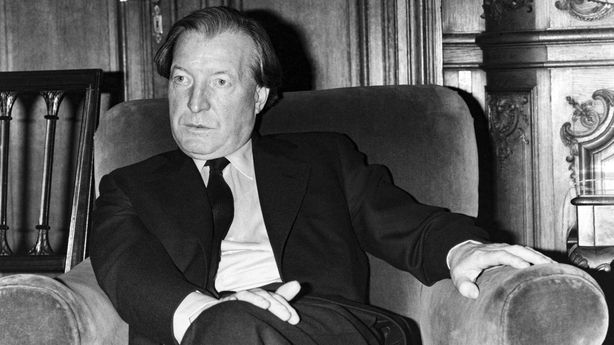
Among other places, Haughey visited the Halal meat factory in Ballyhaunis and attended mass at Knock Shrine. The highlight of the weekend was the unveiling of "Tablets" in Irish and English on the house in Castlebar where he was born 55 years earlier. The platform party included the redoubtable Monsignor James Horan who was captured in a picture by Eric Luke sharing a thumbs-up moment with the Taoiseach on the pledge of an airport for Charlestown.
Word had gone out that a big turnout was expected, and the attendance included many of Haughey’s cabinet and junior ministers, especially the newcomers like Ray MacSharry, Albert Reynolds, Mark Killilea and many more, with pride of place going to the local junior minister, Padraig Flynn (who came up with the Tablets nomenclature).
It was a wonderful opportunity for a newcomer to make contacts as the entourage included Haughey henchmen like PJ Mara, Frank Dunlop (a recent convert) and Eoin Patten. But my outstanding memory is the presence of a young local TD from another party mingling with the visitors. Fine Gael’s Enda Kenny was there to show courtesy to the office of the Taoiseach, and he looked totally at ease among his political opponents.
So, I wondered then, as I still do, about the differences between these two parties with their roots in the Civil War of 1922 - 1923. For decades they had opposed each other, often bitterly, in the Dáil and on election platforms. Who took what side, when the Treaty was negotiated, was still relevant. Family tradition and tribal loyalty were obviously at play.
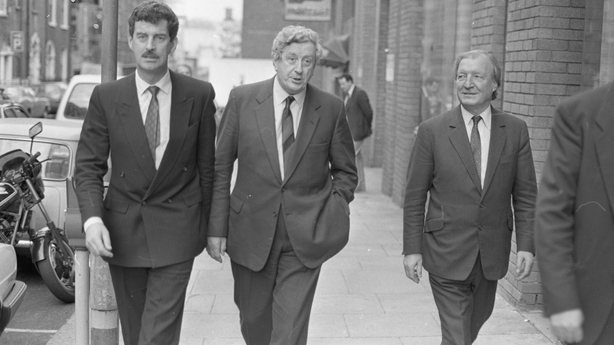
Who rather than what a party was for, was a big factor too. In talking to politicians and observers for the Two Tribes series, there’s a common thread that suggests Fine Gael, certainly prior to the Garret FitzGerald era, was representative of better-off people, business and professional types and large farmers, while Fianna Fáil was for the less well off, people living in the urban terraces and the smaller farmers.
Fine Gael emphasised fiscal responsibility, and law and order, claiming (sometimes rightly) that they were left to clear up an economic mess, while Fianna Fáil’s priorities were perhaps more practical, evidenced by a huge programme of social housing that saw a sixfold increase in new homes in their first decade in power. As Olivia O’Leary observes, Fianna Fáil were more inclined to take risks, and often those risks paid off, as with the introduction of free education and school transport at second level.
Those who see little difference between the parties will find supporting evidence as early as 1948 when Fianna Fáil were shocked to be ousted by a multi-party coalition after 16 years of unbroken rule. As Erskine Childers wrote to a senior colleague, Sean McEntee: "There are 250,000 voters of age 21 to 25 who do not believe there is any substantial difference between us and FG. They choose FF because of Dev and other personalities. There is in fact no policy difference save on the Irish Language."
Differences based on personality certainly motivated many party members and were a ready source of insults at election times, right up to the 1990s. Like Phil Hogan, Peter Prendergast, the general secretary who quickly rebuilt Fine Gael with Garret Fitzgerald after a rout in 1977, regarded Charles Haughey as a godsend bogeyman to be attacked at every turn.
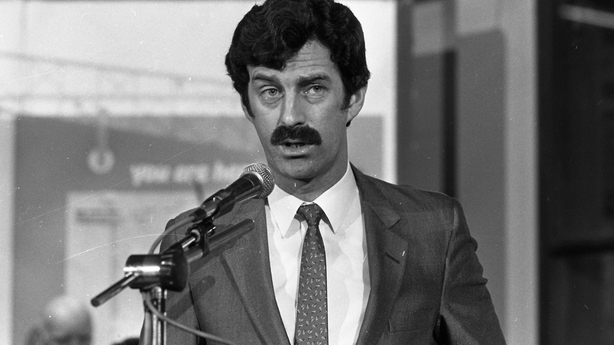
Haughey’s baggage from the 1970s arms crisis, when he was fired as Finance Minister for his role in an attempt to import arms for the Provisional IRA, made him an easy target, as did his failure to deliver on an early promise as Taoiseach to control government spending.
Auction politics became a strong feature of electoral battles in the 1970s. In opposition for 16 years, Fine Gael and Labour got elected in 1973 thanks to a 14-point plan promising to cut prices and reform state institutions. Notoriously, Fianna Fáil won a 20-seat Dáil majority in 1977 on the back of a manifesto that offered grants for first-time home-buyers, the abolition of car tax and domestic rates.
Four years later, not to be outdone, Garret FitzGerald countered Haughey’s promise of an airport at Knock with a plan to build an International Sports Centre nearby. For women working in the home, Fine Gael promised a monthly payment of £9.60 in recognition of their contribution to society. They’re still waiting.
Hand-to-hand combat in the Dáil and on the airwaves was intense in the Haughey-FitzGerald era, especially on Northern Ireland with Haughey denouncing the Anglo-Irish Agreement of 1985 as a sell-out of nationalists, while Garret’s ultimately futile attempts to control borrowing were disparaged as Thatcherism.
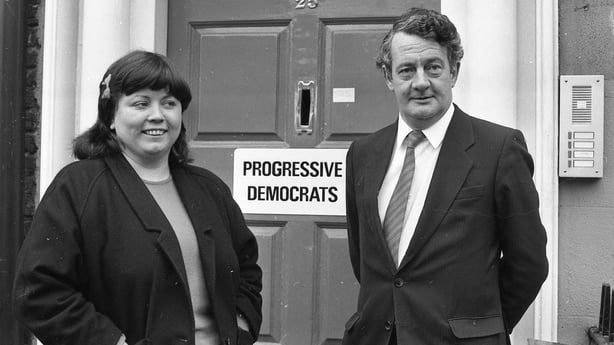
But as happened so often before and since, the responsibility of office showed how little divergence actually existed between the two parties. Returning as Taoiseach in 1987, Haughey would implement the Anglo-Irish Agreement and take an even tougher line on the public finances. Among my few keepsakes from five years as a political correspondent with The Irish Press is a front page headlined: "It’s MacBruton".
The first paragraph read: "The Minister for Finance Mr McSharry yesterday issued a tighter fitting version of the hair shirt designed by his Fine Gael predecessor, John Bruton, in a Budget which surpassed expectations in the severity of its spending cuts and other measures." Eight days later, on the last broadsheet edition of the paper, before it went tabloid, the headline on my lead story proclaimed: "Charlie to Axe a Billion".
It has been absolutely fascinating to revisit these and other times for the two-part television documentary airing on RTÉ One. Producer Mike Keane and writer-director Andrew Gallimore of Midas Productions assembled a compelling cast of participants, observers, and historians, and it was my privilege to interview them about how these once dominant parties progressed from vigorous and often bitter opposition to cooperating in a coalition Government.
Mike and Andrew took the more difficult option to tell the Two Tribes story thematically rather than chronologically. The result is a compendium of pacy surveys of key subjects like party identity, the economy, strong leadership, Northern Ireland, negative campaigning, leadership heaves, social issues and what next?
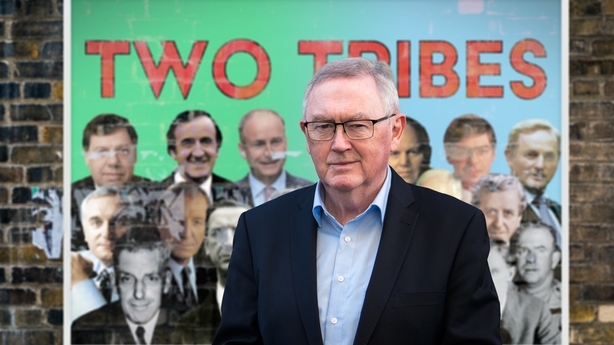
Inevitably, they were many valuable insights, memories and admissions that didn’t make it into the final cuts. But here’s the good news; rather than consign the original material to the archives, RTÉ is using a range of platforms - podcast, RTÉ Player and YouTube - to bring many of the interviews conducted for the series to its audiences.
For example, former Labour leader Dick Spring talks about how various coalitions came together (and fell apart) and his contrasting relationships as Tánaiste with Taoisigh FitzGerald, Bruton and Reynolds. Eoin O’Malley, son of PD founder Des O’Malley gives a frank and entertaining account of the pressures on his late father’s agonising over entering and leaving government with Fianna Fáil.
Master storyteller Sean Duignan recalls the election of his father Peadar to Dáil Éireann for Fianna Fáil and his own time as RTÉ political correspondent prior to becoming Albert Reynolds’ press secretary. Mary Hanafin explains why, for her, Civil War politics hasn’t gone away, while Nora Owen, grandniece of Michael Collins, takes us through the battles of the Garret era and beyond.
John Bruton attaches great significance to Fine Gael’s Redmondite and parliamentary party roots and insists that violence was never necessary to achieve political ends. He also recalls his tumultuous periods in Government as minister and Taoiseach.
In her first comprehensive interview since leaving Government almost 12 years ago, Mary Harney reflects on her time as Ireland’s most influential female politician to date. Former European Commissioner Phil Hogan speaks bluntly about his role as Enda Kenny’s organiser and defender, and also offers interesting thoughts on more recent events.
And there is much more.
Two Tribes airs on RTÉ One and RTÉ Player on Wednesday 21 December at 9.30pm and on Thursday 22 December at 10.05pm.
